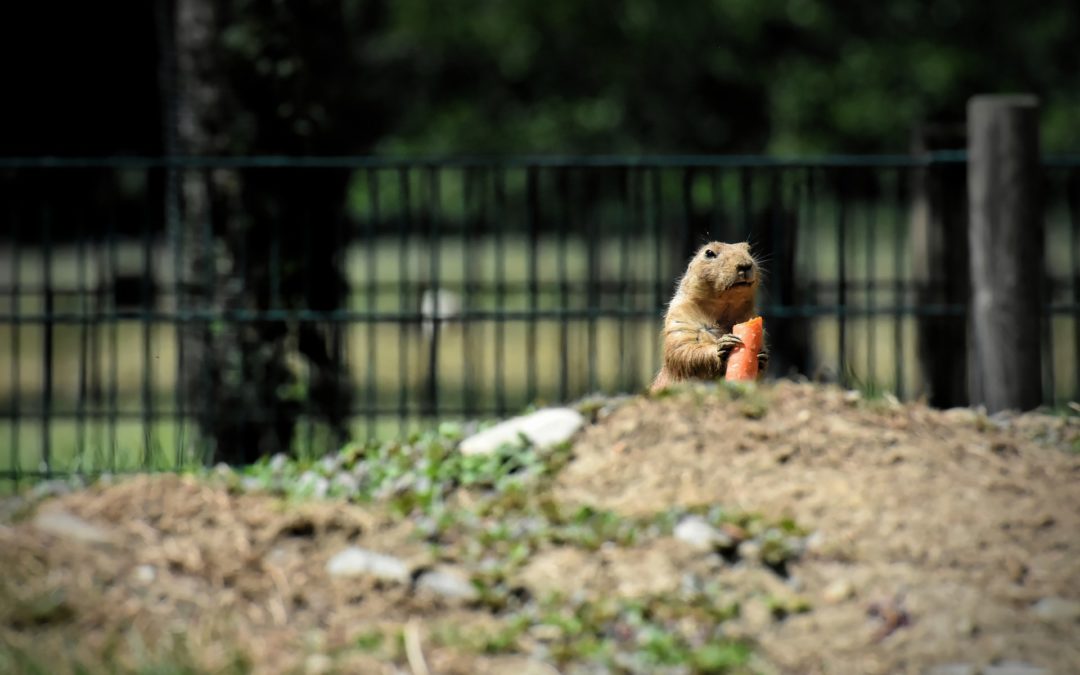Prairie Dogs & the Plague
Gunnison’s prairie dogs (Cynomys gunnisoni) are found primarily in the Four Corners region of North America. They are part of the squirrel family of rodents and can live in communities of hundreds of individuals. You have probably seen them while driving through the prairie landscapes of the Southwest. Perhaps you even have a prairie dog town near your home.
These adorable critters, unfortunately, carry Plague (Yersinia pestis) – referred to as sylvatic plague when passed between rodent populations. This is the very same disease that caused the infamous pandemic – known as The Black Death – during the Middle Ages in Europe.
There are three forms of plague caused by bacterium Yersinia pestis. Bubonic is the form that is spread to humans by infected fleas from small mammals. It is also the form that prairie dogs carry. The first known cases of plague in the U.S. occurred in the port city San Francisco around the late 19th century and early 20th century.
Today the bubonic plague is always present at low levels. Although, some years report higher cases than average. According to the CDC, between one and 17 cases are reported yearly in humans. Hotspots appear mostly in the Four Corners region – the high deserts of northern New Mexico, Arizona and southern Colorado.
In Colorado’s Recent News
Not all prairie dog colonies are infected, but it is always important to take precautions when you or your pets are around rodent habitats. As you will find, prairie dogs do not only make their homes in remote, rural locations. The most recent cases of plague infected mammals actually occurred near Denver.
In midsummer of 2019, Smithsonian Magazine reported that the U.S. Fish and Wildlife Service shut down the 15,000-acre Rocky Mountain Arsenal National Wildlife Refuge. This is due to the discovery of fleas infected with the bacterium Yersinia pestis, found in the refuge’s black-tailed prairie dog colonies. Plague-affected areas were also discovered in Commerce City, a northern suburb of Denver.
The prairie dog colonies were monitored and treated with an insecticide. This powdered treatment covered the burrows with the intention of killing fleas as it caught onto the prairie dogs’ coats. No outbreaks of the plague were ever reported in humans and the majority of plague-affected areas were able to reopen in late summer.
Vaccination
Prairie dogs are not only carriers of plague, it also threatens their health. The disease has the potential to wipe out entire colonies. This significantly effects populations, proving detrimental to another important species – the black-footed ferret. This special native ferret is one of the most endangered species in North America. It depends entirely on prairie dogs for its food and shelter.
A vaccine has been created in efforts to protect prairie dogs and the species that depend upon them, as well as to prevent the spread of the plague to human populations. This treatment, which involves injecting pellets with the vaccine and spreading them out to colonies for the small mammals to eat, has proved effective. The U.S. Fish and Wildlife Service is now treating prairie dogs all over Colorado.
Staying Healthy
The plague may always be something we have to reckon with, but there are measures we can take to protect our families and pets. First of all, never assume that a rodent population is not disease carrying, plague or otherwise. You should also avoid rodent habitats whenever possible and follow the subsequent steps:
– Eliminate nesting places for rodents around your home
– Avoid picking up or touching dead animals
– Wear gloves if you must handle sick or dead animals
– Use insect repellent to prevent flea bites
– Protect your pets, treat cats and dogs for fleas regularly and keep them away from rodent habitats, such as prairie dog colonies
Lastly, if you are experiencing an issue with burrowing rodents or other wildlife on your property, your safest bet is always to contact your local wildlife removal professionals.

